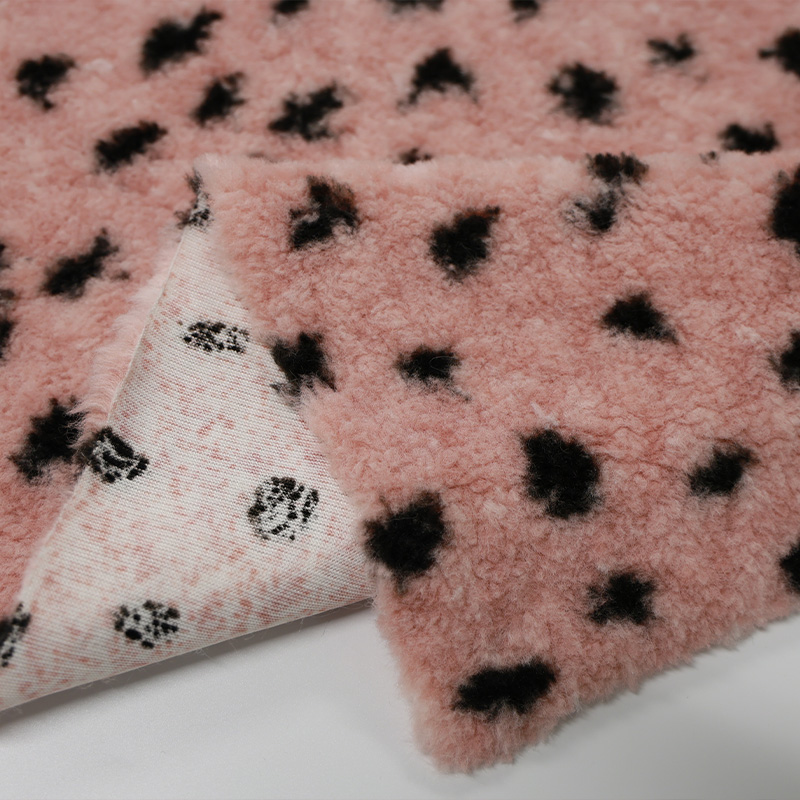











In the dynamic world of fashion, imitation lamb fur has emerged as a significant player, captivating the attention of both designers and consumers. This synthetic alternative to genuine lamb fur offers a range of unique benefits, but it also presents certain challenges. This article delves into the market insights surrounding imitation lamb fur, exploring its merits and demerits in detail.

Merits of Imitation Lamb Fur
1. Cost-Effectiveness
One of the most compelling merits of imitation lamb fur is its cost-effectiveness. Compared to genuine lamb fur, which can be extremely expensive, imitation fur offers a more affordable option. This makes it accessible to a wider range of consumers, including those on a budget. For fashion designers, it provides an opportunity to create luxurious-looking designs without the associated high costs.
2. Versatility and Style
Imitation lamb fur is also highly versatile and can be styled in various ways. Its synthetic nature allows manufacturers to create a wide range of textures, colors, and patterns, catering to diverse tastes and preferences. This versatility makes it a popular choice for designers who want to experiment with different aesthetics and trends.
3. Easy Maintenance
Another significant merit of imitation lamb fur is its ease of maintenance. Unlike genuine fur, which requires special care and handling, imitation fur is generally easier to clean and maintain. It can be washed and dried using standard household methods, making it a practical choice for consumers who prioritize convenience.
4. Ethical Considerations
The ethical implications of using genuine fur have long been debated. Imitation lamb fur offers a cruelty-free alternative, appealing to consumers who are concerned about animal welfare. This ethical aspect can be a significant selling point, particularly in markets where consumers are increasingly conscious of their impact on the environment and animals.
Demerits of Imitation Lamb Fur
1. Durability Issues
One of the primary demerits of imitation lamb fur is its durability. While advancements in technology have improved the resilience of synthetic materials, they still tend to wear out faster than genuine fur. The fibers can become matted or tangled over time, particularly with frequent use and cleaning. This can affect the overall appearance and texture of the fur, reducing its lifespan.
2. Appearance and Realism
Another limitation lies in the appearance and realism of imitation lamb fur. While manufacturers have made strides in creating synthetic fibers that mimic the look and feel of natural fur, there can still be noticeable differences. The texture,光泽度, and color variation may not be as nuanced as in genuine lamb fur, which can affect the authenticity and aesthetic appeal of the design.
3. Sensitivity to Weather Conditions
Imitation lamb fur can also be sensitive to weather conditions. In extreme heat, it may not provide the same breathability as genuine fur, leading to discomfort. Similarly, in cold weather, its insulation properties may not be as effective, limiting its usability in certain climates.
4. Consumer Perception
Lastly, consumer perception can pose a challenge for imitation lamb fur. While many consumers appreciate the ethical and cost-effective aspects of synthetic fur, some may still prefer the authenticity and luxury associated with genuine fur. This can affect the demand for imitation fur, particularly in high-end fashion segments where exclusivity and tradition are valued.
Conclusion
In summary, imitation lamb fur presents a range of merits and demerits in the fashion market. Its cost-effectiveness, versatility, ease of maintenance, and ethical considerations make it an attractive option for both designers and consumers. However, durability issues, appearance limitations, sensitivity to weather conditions, and consumer perception can pose challenges. Understanding these factors is crucial for businesses operating in this market, as it allows them to make informed decisions and cater to the evolving needs and preferences of consumers.